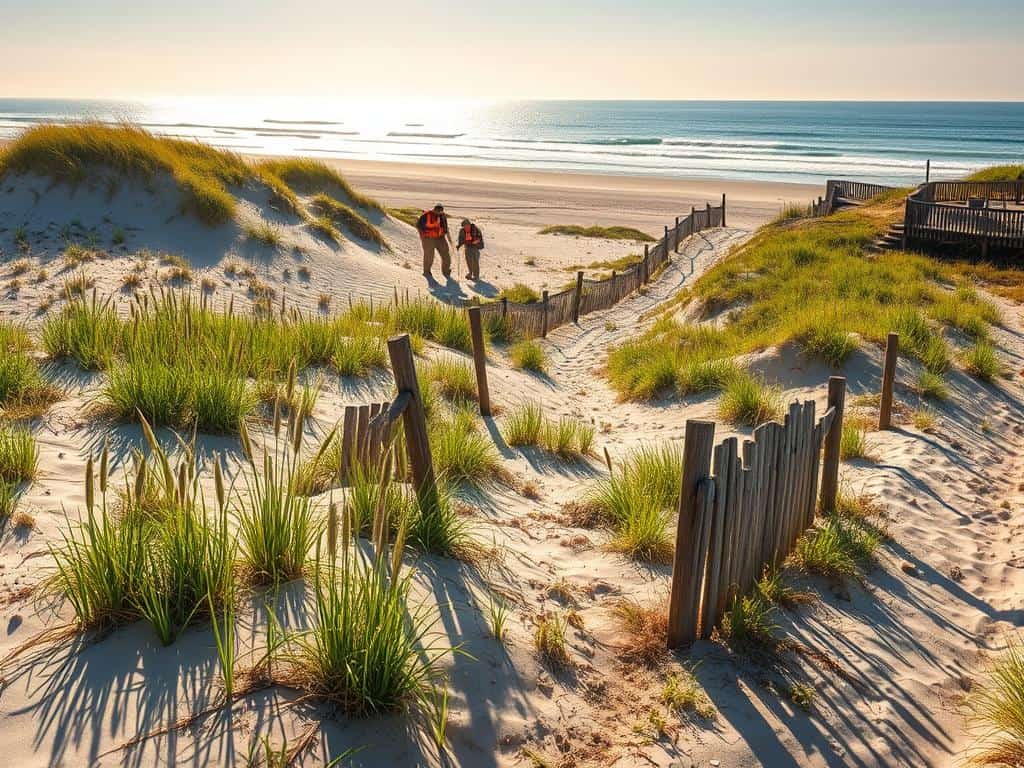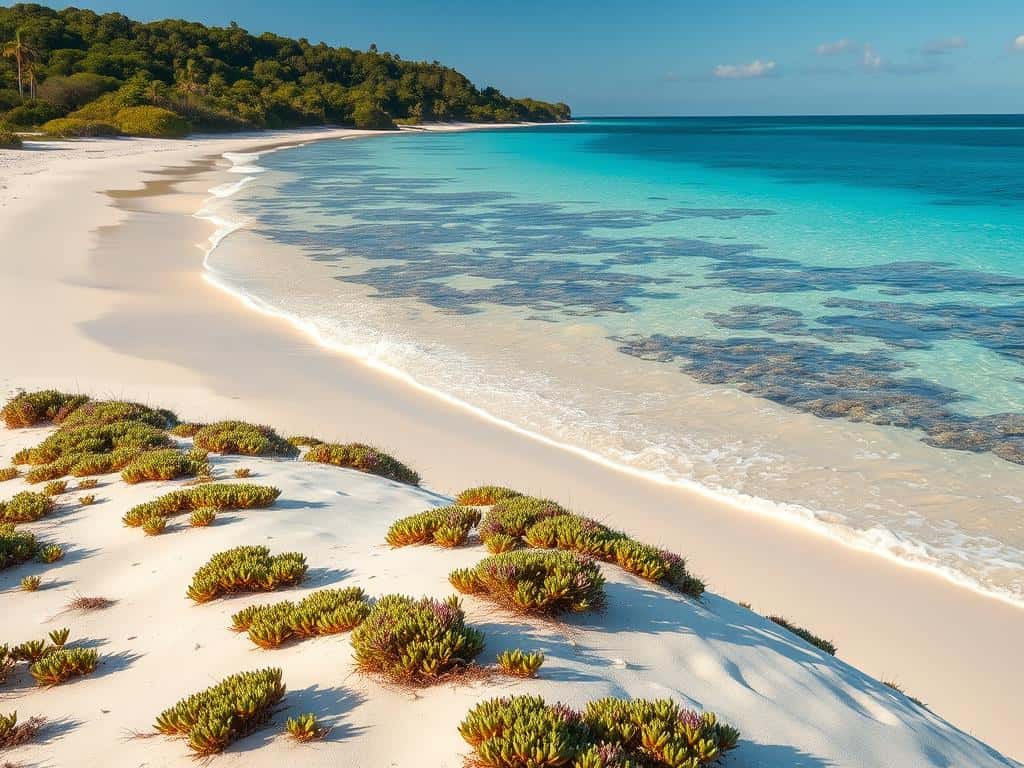Standing on California’s golden shores one summer afternoon, I was amazed by the life around me. The waves caressed my feet, and seagulls flew overhead. It made me realize how important beach conservation is.
These coastal areas are home to many species and offer vital services. Yet, pollution and habitat destruction threaten these beautiful places. This made me more determined to help clean up marine debris and protect our coasts for future generations.
The living shorelines approach uses natural materials to fight coastal erosion and improve ecological balance. By focusing on beach conservation, we aim to protect these ecosystems. We also want to improve community well-being and tourism.
Let’s explore the complex relationships in our coastlines and the strategies to preserve them for the future.
Key Takeaways
- Beach conservation plays a vital role in protecting coastal ecosystems.
- Shoreline ecosystems provide essential services and biodiversity.
- Marine debris cleanup is critical for beach health.
- Innovative strategies like living shorelines promote ecological balance.
- Community well-being and tourism depend on healthy coasts.
Understanding Coastal Ecosystems
Coastal ecosystems are incredibly productive. They support marine life and humans alike. These areas are not just pretty; they’re key for biodiversity.
They are home to fish, birds, and marine mammals. The connections in these ecosystems help regulate the climate. They also help with carbon sequestration and reduce storm damage.
The Value of Coastal Ecosystems
Coastal ecosystems are very important. They help keep our planet healthy. These areas are essential for many species.
They serve as nurseries for fish and feeding grounds for birds. Protecting these places is vital. It ensures the survival of many species and keeps our world balanced.
Threats to Coastal Ecosystems
Coastal ecosystems face big threats. Climate change is a major issue, causing sea levels to rise and ocean temperatures to increase. This harms marine habitats like coral reefs.
Pollution from plastics and excess nutrients also harms water quality. Overfishing depletes fish stocks and disrupts the ecosystem. It’s important to understand these threats to protect coastal ecosystems for the future.
Beach Conservation: Protecting Shoreline Ecosystems
Beach conservation is key to protecting shoreline ecosystems. It’s not just good for the environment. It also helps local communities by promoting sustainable practices.
Conservation Strategies for Shoreline Protection
Creating protected areas helps natural habitats grow. This lets diverse species thrive, keeping the ecosystem balanced. Local communities play a big role in this, thanks to education.
By learning about their impact, people can adopt better sustainable practices. This helps protect our natural resources for the future.
Importance of Dune Restoration
Dune restoration is vital for shoreline protection. Dunes protect against storms and erosion. They also provide a home for many species.
Restoring dunes involves planting native plants. This makes the shoreline stronger. It also boosts biodiversity, ensuring healthy beaches for generations to come.

Conclusion
Beach conservation is more than just an environmental issue. It’s key to keeping our shorelines healthy and beautiful. These ecosystems are vital for biodiversity and community well-being. They offer habitats and fun activities, showing why we must protect them.
Climate change, pollution, and habitat loss are big challenges we face. But, with sustainable coastal management, we can fight these issues. Community involvement is essential for success. When we work together, we can make a big difference.
I hope this talk motivates you to join the fight for beach conservation. Protecting our coastlines not only keeps nature beautiful but also ensures a healthy future for all. Let’s work together to make our coastal areas more sustainable and strong.



